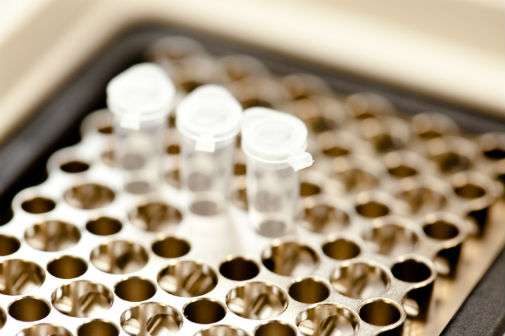New online system set to reduce hundreds of chemical tests on animals

Scientists at the University of York and SimOmics Ltd have developed a new online data sharing system which could reduce the need for hundreds of laboratory tests on animals.
SimOmics Ltd, a spin-out company which includes scientists from the University's electronic engineering, environment, mathematics, and computer science departments, claim that the new web-based system, developed for the agricultural chemical production industry, could significantly reduce the number of tests on animals by allowing chemical formulations to be shared between companies.
To ensure human safety, agricultural chemical formulations, such as pesticides, are tested on animals for acute oral, skin and eye irritation classification. For confidentiality reasons, the chemical formulations are not shared between companies, which mean that other interested companies maybe testing the same formulas, requiring yet more animal experimentation.
Replace testing
Professor Jon Timmis, Head of the University's Department of Electronic Engineering and CEO of SimOmics Ltd, said: "It is crucial that agricultural chemical products are tested for their safety before they are used in the environment.
"Small animals, such as rats and rabbits, are currently used to test chemical formulations, but there is now a growing commitment across the industry to reduce the number of animals used in testing and eventually replace them altogether.
"We estimate that the new system we are working on could reduce the need for tests on more than 1,000 animals a year."
Confidentiality
The SimOmics Ltd team have been awarded £100,000 from the National Centre for the Replacement, Refinement and Reduction of Animals in Research (NC3Rs), to develop a system that will pool existing animal data together with non-animal data and mathematical models to determine acute oral, skin and eye irritation classifications whilst maintaining confidentiality of agrochemical company formulations. .
Supported by the NC3Rs, and agrochemical companies Syngenta, and Dow Agrochemical scientists, the project will aim to deliver a new system to confidently classify mixtures of chemicals based on existing data. This will then present the user with options on how to locate those results without having to conduct any further testing on animals.
Evidence-based
Professor Timmis said: "The reason this kind of data has not been shared before is because the ingredients of formulations are kept confidential.
"Our new system will explore whether putting an evidence-based data management in place, which can be provided to a system regulator, will help facilitate the sharing of confidential data and models in an acceptable way, potentially cutting the use of animal testing in the thousands each year."
York mathematicians and computer scientist will produce algorithms that allow the new tool to make predictions based on testing data already available. These predictions will be able to guide the need for experimentation, or promote the sharing of data that could indicate no further experiments are required.
Professor Timmis added: "Development of these kinds of technologies will help to change the mind-set of whole industries and regulators as well as promote the use of alternative testing tools and reusable data. We have seen much industry support for this research already, so we are looking forward to launching the new system within the next 12 months."
Provided by University of York

















